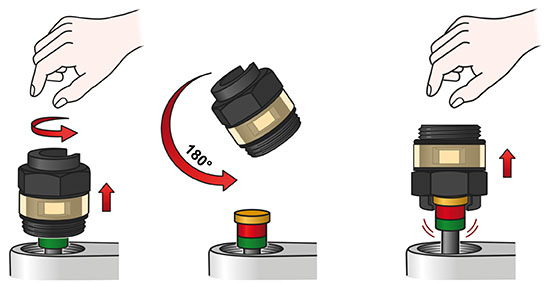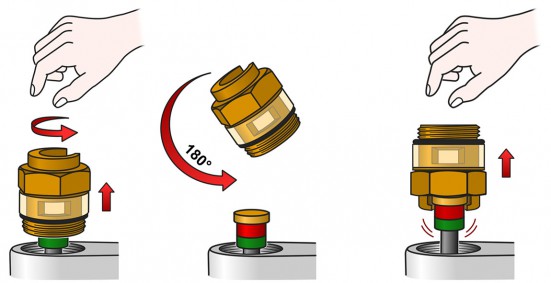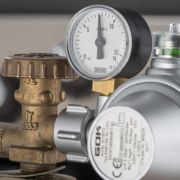How can I release an OPSO (SAV)?
If the OPSO (SAV) has responded to the pressure regulator in an LPG system, it can be easily released again. It is important to know and eliminate the cause of the response of the safety device beforehand.
The OPSO (Over-Pressure Shut Off) blocks the gas flow if an inadmissible high pressure is present at the outlet of the pressure regulator. We have already explained how it works. With GOK fittings with an outlet pressure of 50 millibar, the response pressure of the safety device is c. 120 millibar. If the OPSO, previous designation: Safety shut-off valve SAV, has stopped the gas flow, you must first determine the cause of the fault.
Requirement
If you can exclude the pressure regulator as a source of error, the OPSO can be permanently released. Requirement for this: You must first correct the cause of the overpressure, for example, clean the blocked ventilation line.
In the following image gallery, you can see how the safety device can be released again. We distinguish between two versions: We supply pressure regulators with a recent year of manufacture with a black plastic cap, previously the cap was made of brass.

Unscrew the plastic cap, turn it by 180 degrees and pull it until the spindle perceptibly clicks into place.

Unscrew the brass cap, turn it 180 degrees and pull it until the spindle perceptibly locks into place.
Before releasing, please always close the gas withdrawal and shut-off valve on the consumer equipment and bleed the pressure regulator or the line. After this step, tighten the connections again. If you have rectified the cause of the response of the OPSO, you will find the red/green visual indicator on the top of the pressure regulator. Now unscrew the protective cap, turn it 180 degrees and attach the groove to the spindle plate. Please pull until the spindle perceptibly clicks into place.
You can see whether you have properly released the OPSO when you unscrew the visual indicator again. This must be set to green in order to start up the system. Before you do this, please check the system for leak-tightness.
Handy information about the OPSO (SAV)
For the OPSO, both the German Institute for Standardisation (DIN) and the Technical Rules for LPG (TRF) stipulate the response pressures. DIN standard 4811 specifies 120 millibar as the maximum value, however indicates a tolerance of 95 to 132 millibar. The TRF only specify the maximum value of 120 millibar and refer to DIN standard 4811.
Please observe our note that the work on the system described above may only be carried out by a qualified person.




